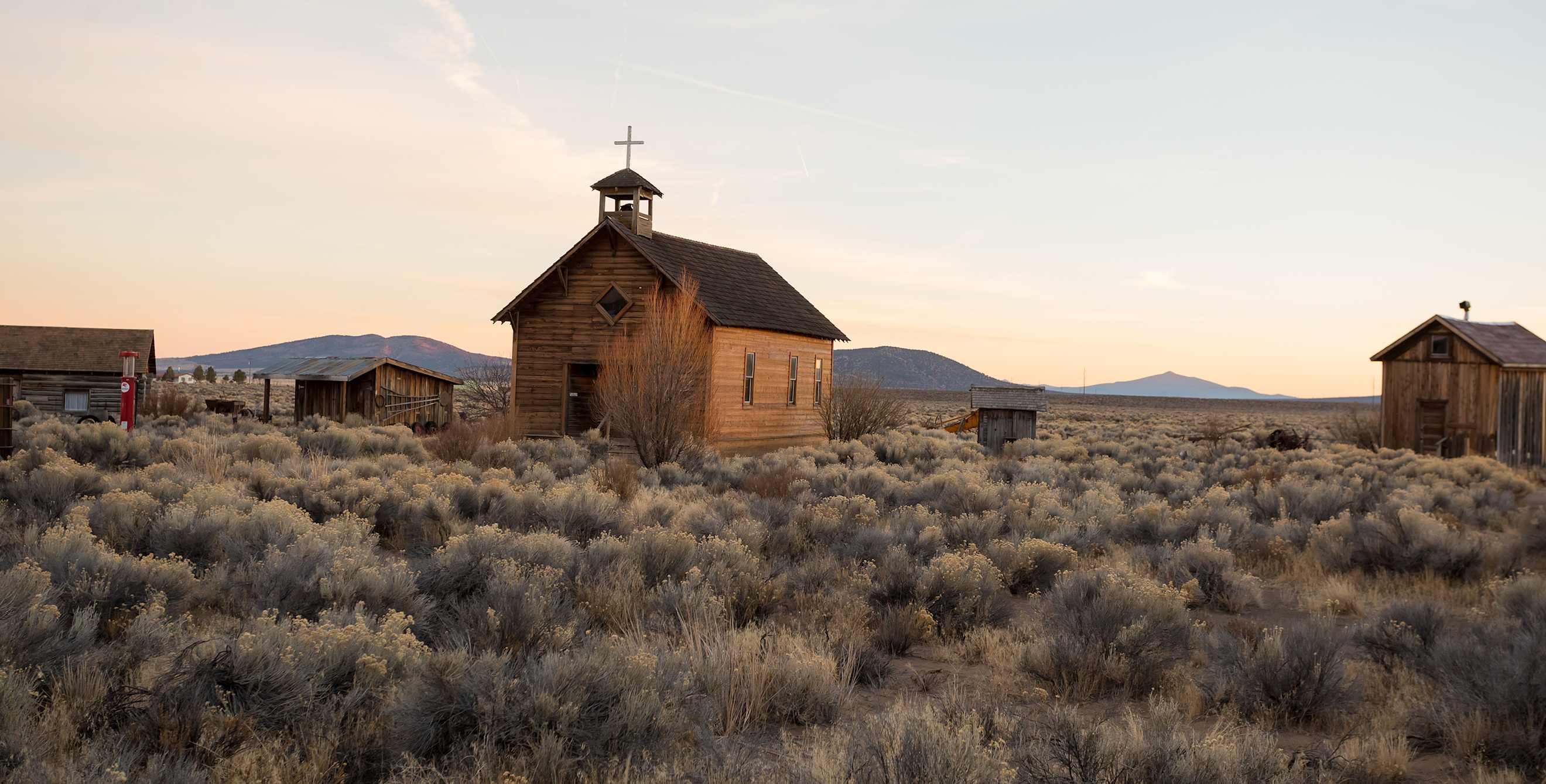
Fort Rock: Oregon's Outback
Rising out of the high plains south of Bend, Fort Rock is home to wildlife and a ghost town.

Around 30 miles southeast of Bend, the ponderosa forests give way to sagebrush-filled plains. A bit farther along, you'll enter the Outback Scenic Byway, a 171-mile road leading straight into the heart of Oregon's high desert. Keep an eye out as you drive and, on the horizon, you'll see a 300-foot-high landmark appear: Fort Rock State Natural Area, a massive volcanic ring that looks as though it might have dropped in straight from the Australian Outback.
Supposedly named in 1873 by a settler chasing cows, Fort Rock actually originated over 100,000 years ago, when a prehistoric volcano exploded, raining ash and tuff into an inland sea. To get a closer look at the rust and charcoal-hued formation, hike along the crater's interior on 1.1-mile long Fort Rock Loop Trail, marveling at the steep walls overhead. Or, for a chance to spot bald eagles, red-tailed hawks, and pronghorn antelope, scramble up smaller paths near the crater's towering walls.
In 1938, archaeologist Luther Cressman found dozens of 9,000-year-old sagebrush sandals beneath the tuff in Fort Rock Cave, or "Cow Cave," as locals call it. These sandals are the oldest known American Indian footwear in existence. To explore the famed cavern yourself, schedule a tour during the summer, and a state park guide will tell you more about the area—and show you a pair of replica sandals.
Two miles south stands a completely different artifact: Fort Rock Homestead Village Museum. First opened 30 years ago, the place showcases a dozen early 20th-century structures set up neighborhood-style, all transported here by the county and a crew of volunteers. Stroll the streets of the composite ghost town, peek into the windows of the church, the replica blacksmith shop, and the restored schoolhouse, and imagine life on the range before the Edison bulb. The shelves at the general store are still stocked with vintage tins and teapots, and, overhead, the old windmill spins lightly in the breeze. In the reception center, you can peruse arrowheads and 7,000-year-old weavings, or watch volunteers tend the asparagus and rhubarb in the heritage garden outside.